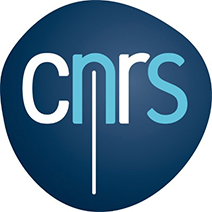


Thematic fields
Advanced Ferroics
Ferroic materials are multifunctional materials whose principle is based on controlling a ferroic parameter (electric polarization, magnetization, elastic strain) by an external stimulus (electric and magnetic fields, light, temperature, etc.). There are many applications in health (ultrasound probes), electronics and digital (FeRAM, FeFET transistors, synapses for neuromorphic computing), automotive (pressure sensors for airbag triggers), and defence (sonar). The ferroelectric theme will build on the strengths of the SPMS and the momentum created by the results of recent calls for projects (joint laboratory with the SME Pytheas, European TSAR project, ANR projects) to strengthen itself and develop new research areas:
- New actuators: supported by the creation of the joint laboratory SPyMS between SPMS and the company Pythéas, the ANR MEGAFILM, and an Astrid project, the ferroic axis will develop the piezoelectric and electrostrictive materials of tomorrow.
- Topological objects and ferroelectric nanostructures: the ferroelectric axis develops means for synthesis and advanced characterization (X-ray diffraction, STEM, spectroscopies) of ferroelectric nanostructures (nanoparticles, superlattices).
- Photo-induced effects in multiferroics: supported by the ANR SUPERSPIN and THz-Mufins, the ferroic axis seeks to understand the properties of multiferroics under illumination: photovoltaics, photocatalysis, photo-induced spin currents, and deformations generated under lighting.
Defects and non-equilibrium materials
Defect control is the central part of materials engineering. The control of defects applies essentially to oxide materials where the composition will directly influence a concrete functional property: protonic conduction, transport properties in nuclear fuels, dielectric constant, piezoelectricity, electrostriction…
The aim of this thematic field is to
- understand how substitutions can modify the behaviour of the target material,
- study the influence of the environment (atmosphere, temperature) on the evolution of the properties of a system in operation.
- look at how a specific preparation of a material can alter its properties and keep them out of equilibrium in the device's operating conditions.
Such an understanding classically requires a combination of structural characterizations (XRD, Raman, STEM...), modelling by ab initio calculation or derived methods, and electrical measurements, allowing the separation of the different contributions (composition, microstructure, environment) to the physical properties.
Application Domains
Electronic, Energy, Environment and Pharmaceutical industries, functional materials, piezoelectric transducers, energy harvesters, solid oxide fuel cells, multilayer capacitors, electrostrictive actuators, memories and artificial synapses, quantum enabling technologies, photovoltaic cells, photo- and piezo-catalysts, photo-sensors and emitters, biomedical field, hydrogen technologies, nanostructured ceramics, nuclear materials.
Academic Partners
NATIONAL: CEA-SACLAY, CEA-DAM, CEA-CADARACHE, ÉCOLE POLYTECHNIQUE, FACULTY OF PHARMACY (CHATENAY-MALABRY), UNIVERSITY PARIS XI, UNIVERSITY PARIS VI, ICMCB, ILL, ESRF, LLB, SOLEIL, LETI, THIAIS, VITRY, ENS-ParisSaclay, C2N-Saclay, UMPhy-Saclay, GEMAC-Versailles, GREMAN-Tours, IMMM-Le Mans, UPJV-Amiens, ETC.
INTERNATIONAL: UNIVERSITY OF TOKYO WASEDA, SPRING8, UNIVERSITY OF ARKANSAS, EPFL, UNIVERSITY OF CRACAW, UNIVERSITY OF BELGRADE, UNIVERSITY OF BARCELONA, GEORGIA TECH, JSI-Slovenia, Univ. Duisburg-Essen-Germany, LIST&Univ-Luxembourg, Univ. Liège-Belgium, UCLondon-UK, ISIS-UK, NTNU-Norway, Univ. Tunis El Manar-Tunisia, Xi’an Jiatong Univ-China, East China Normal Univ.-China, SITP-Shanghai-China, UDrexel-USA, UC Berkeley-USA, UConn-USA.
Industrial Partners
- COORSTEK
- EXXELIA
- FERROPERM
- HORIBA-JOBIN YVON
- IMASONIC
- IXSEA (SONAR)
- LETI
- NANOE
- PYTHEAS TECHNOLOGY
- SAINT-GOBAIN
- SCHLUMBERGER
- ST MICROELECTRONICS
- SRT Microcéramique
- THALES & THALES UNDERWATER SYSTEMS
More information
Download the 2023 laboratory report HERE
CONTACT
Director : Hichem DAMMAK
Tél. : +33 (0)1 75 31 65 80
E-mail : hichem.dammak[at]centralesupelec.fr
Administration : Céline FREYDIER
Tél. : +33 (0)1 75 31 68 82
E-mail : celine.freydier[at]centralesupelec.fr




